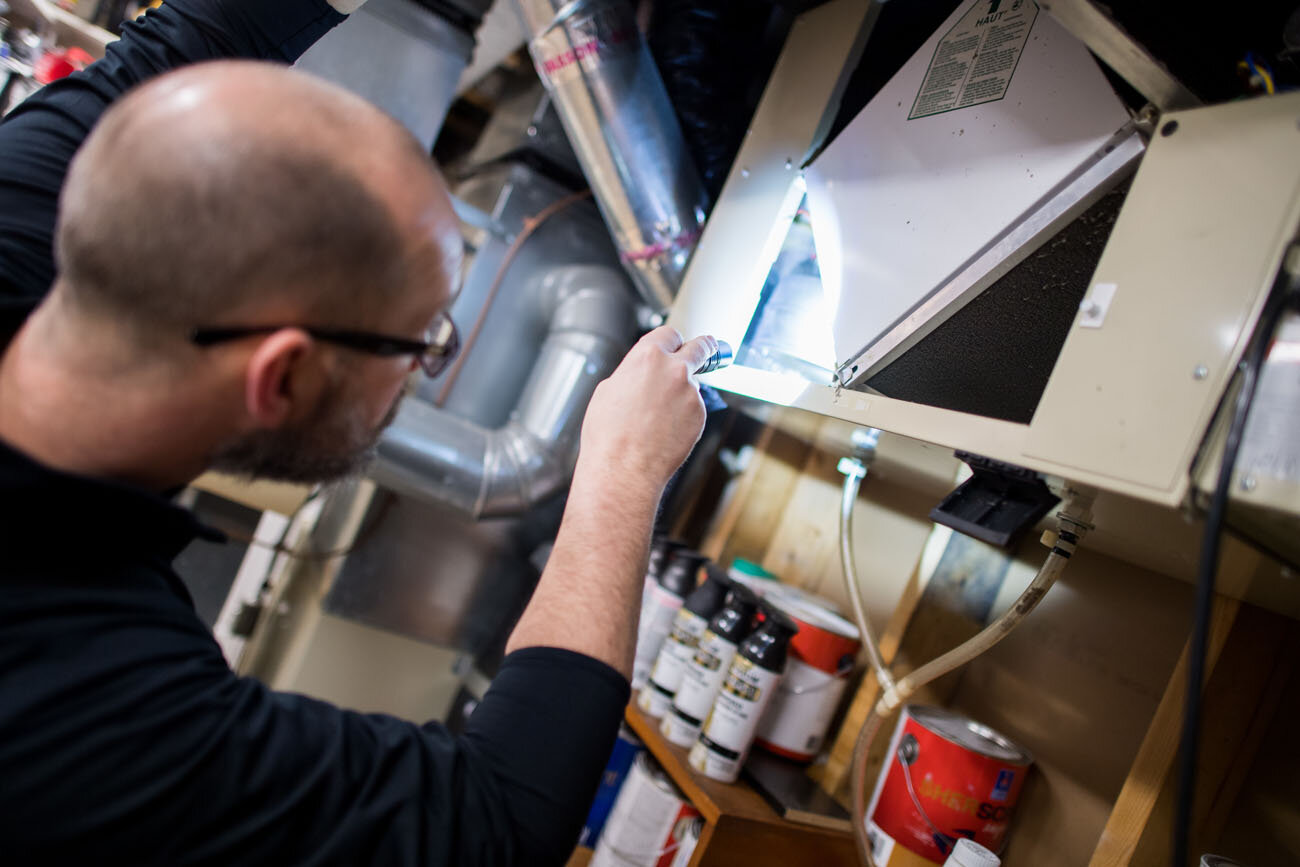What’s Included
All of our home inspectors are proud members of ASHI, the American Society of Home Inspectors. As such, we abide by the ASHI Code of Ethics, as well as the ASHI Standards of Practice, which sets forth the minimum requirements for a home inspection. The list below incorporates the ASHI Standards of Practice but also incorporates part of the Structure Tech list of Best Practices for a home inspection. This list is written in the same order as our inspection reports. We think this is a pretty boring list, but we occasionally get asked about some of these specific items, so here are the items included in our inspection of single-family homes and townhomes:
ROOF COVERING
- We walk roofs to inspect them. Some common-sense exceptions would be unsafe roofs, roofs not accessible with a 28′ extension ladder, snow covered, etc.
- Gutters and roof drainage systems. We’re big proponents of gutters.
- Flashing. Lack of kickout flashing is also typically reported.
- Skylights, roof caps, roof vents, plumbing vents, and other roof penetrations are inspected.
CHIMNEY, FIREPLACES
- Chimney crowns
- Chimney walls
- Chimney flashing
- Fuel-burning fireplaces, stoves, and fireplace inserts. This usually means wood burning fireplaces or gas fireplaces.
- Fuel-burning accessories installed in fireplaces, such as gas logs.
EXTERIOR
- Wall coverings (aka ‘siding’)
- Windows
- Doors
- Decks
- Balconies
- Stoops
- Steps
- Porches
- Guards (aka ‘guardrails’)
- Drainage and grading that is likely to affect the building
- Retaining walls
- Vegetation that is likely to affect the building
- Walkways
- Patios
- Driveways
- Foundation walls
- Vent terminals and air intakes
- Exterior faucets
BASEMENT / FOUNDATION / STRUCTURE
- Foundation walls
- Basement floor
- Crawl spaces
- Sump Systems, including the sump basket, sump pump, sump cover, and extension piping.
- Floor structure (posts, beams, joists, etc.)
- Basement insulation
- Signs of basement moisture / water intrusion are always a concern for buyers, and we always inspect for this. We use Protimeter Surveymaster moisture meters to check for elevated moisture levels when they’re suspected.
ELECTRICAL
- Exterior electrical components, including the service drop, service entrance conductors, cables, and raceways.
- The main panel and any subpanels. We remove panel covers to inspect the wiring inside. For the record, this is not something that sets us apart from our competition; every ASHI inspector in Minnesota should do this as standard practice, and any home inspector who claims to follow ASHI’s Standards Of Practice should do this.
- Service grounding
- Interior electrical components, including the majority of outlets, switches, and lights.
- Ground fault circuit interrupters
- Arc fault circuit interrupters
- Smoke and CO alarms are recommended when not present
PLUMBING
- Drain, waste, and vent pipes
- Water distribution pipes
- The visible portion of the water main, which is the water supply pipe that brings water into the home
- Water heaters
- Water heater vents. We perform worst-case scenario draft testing at natural draft water heaters.
- Clothes washers and dryers
- Floor drains
- Sinks
- Toilets
- Tubs
- Showers – tiled showers are tested by running water into the corner of the shower for a minimum of 20 minutes. We use infrared cameras to check below tiled showers for leaks.
- Gas lines. We have electronic gas leak detectors to locate gas leaks, but gas leaks are only reported by using a liquid gas detection solution. This prevents reporting any false gas leaks. More info on where we typically find gas leaks here: where to look for gas leaks.
- We report the locations of the main gas and water valves, and typically point these out during the inspection.
HEATING
- Installed heating equipment such as furnaces, boilers, and space heaters. Carbon monoxide testing of heating plants is standard for us.
- Furnace filters are inspected and clients are shown how to change the filter.
- Ductwork
- Registers are all checked for operation with an infrared camera
- Vent connector and vent
- Heat Recovery Ventilators (HRVs) or Energy Recovery Ventilators (ERVs)
COOLING
- Central and permanently installed cooling equipment
- Temperature difference testing is used to determine if cooling equipment is operational
- Condensate disposal
INTERIOR
- Ceilings
- Walls
- Floors
- Doors
- Windows
- Skylights
- Stairs, handrails, and guards
- Counters and cabinets
- Vent fans
- Kitchen appliances
ATTIC
- We access nearly every attic to inspect them; see our blog post on the importance of this: Break the attic ‘seal’ ? If we can walk or crawl through the attic without trampling the insulation, we’ll do so to inspect the attic.
- Framing and sheathing
- Exhaust fans and ducts
- Insulation
- Ventilation
- Locating attic air leaks typically requires some minor disturbing of insulation. We’ll disturb a little insulation to look when attic air leaks are suspected.
GARAGE
- Overhead doors
- Garage door openers
- All of the other stuff that most folks would probably expect; doors, stairs, walls, floor, electrical

